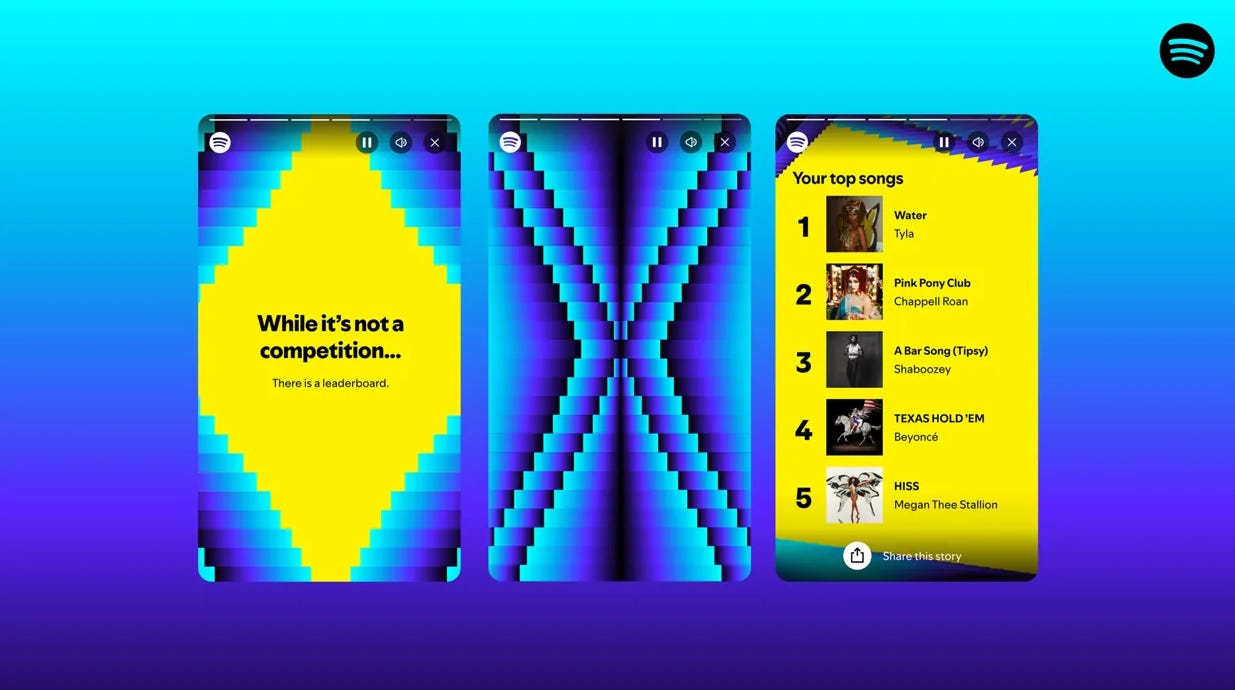What will Spotify Wrapped 2025 look like?
This year's edition left people missing the human connection – let's hope for more of it.
The year is nearly up and while everyone is doing a bit of reflecting and a bit of looking forward, I have data on the brain. Specifically our Spotify data and what happened with this year’s Wrapped (spoiler: it didn’t go so well).
I’ve always viewed Spotify Wrapped as one of the nicer applications of collecting users’ data. Less sinister breach of privacy, and more “enjoy how much we really get each other”.
I was a little shocked at the backlash earlier this month when Wrapped came out. Mine was entirely predictable, as I knew my listening habits centered around just a handful of artists. I hyper-focused on maybe nine or ten songs on repeat, and they appeared on my Wrapped with no surprise.
But for others, something was up. This year Spotify didn’t provide the usual content like top music genres, or even top albums, which seems like the simplest data to pull and present. Instead we got arbitrary musical sub-genres which included “Coastal Grandmother Fingerstyle Rock”, “Boujee Football Rap” and the now infamous “Pink Pilates Princess Strut Pop” which looks like it was served to everyone who listened to Chappell Roan once.
So what happened?
For all the details, The New Yorker released a very good piece written by Brady Brickner-Wood about what went down.
Too long; didn’t read:
People were mad that Wrapped was less personal, and less creative, than ever. Some even insist the data was entirely made up
The campaign put its “generative AI” capabilities at the front and centre of the story
Daniel Ek, Spotify’s billionaire CEO, laid off seventeen per cent of the company’s workforce last December, which allegedly included people in the Wrapped team
Yes, I’m a tech skeptic most of the time. Using AI is great; it’s a powerful tool that can unlock all sorts of wonderful things, especially when it comes to data. But when you take humans out of the equation, as Spotify did with its layoffs, and rely too heavily on what is still a relatively blunt instrument, you’re going to lose out on the benefits that come with creative decisions made by people using the instrument.
For even more on what’s going on with Spotify at the moment, read this fantastic piece by Liz Pelly for Harpers that explains the shadowy side of the company’s operations.
On a different note, it seems the children yearn for physical media alongside their music streaming. Statista reported earlier this year that in 2023, physical music sales generated $5.1 billion, compared to only $900 million in digital music sales worldwide. Of course a vinyl or a CD or a physical pack of sorts costs far more to produce, so it’s no surprise that the price would be higher than what you’d pay to own a digital version. I need to remind myself to apply a data-first mindset here and draw the right conclusions: when it comes to quantity, digital will always outperform. We’re not seeing the heralded return of the cassette tape here. But when it comes to revenue, physical comes out on top.
I find physical media in music especially fascinating, having recently received a vinyl for the first time in decades. I was expecting the usual – an LP record and a track list printed on the inside cover of the packaging. What I got was a gorgeous tangible experience, with booklets packed with notes from the artist, and high quality photographs. It is a delight to sit with and page through. It felt like a present from someone I know (which, to be fair, it literally was). I felt connected, and I’m not talking about the WiFi.
For 2025’s Spotify Wrapped I’m expecting a far more personal experience based on my personal data. Maybe next year Spotify will listen, and give the people what they want: less arbitrary automation, and more tangible connection.




